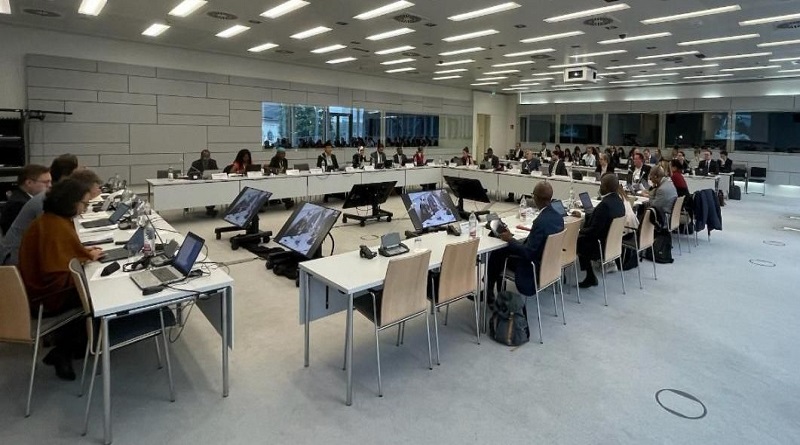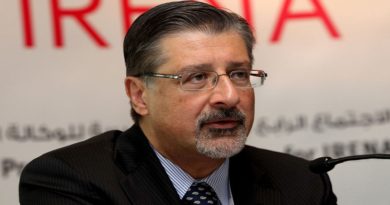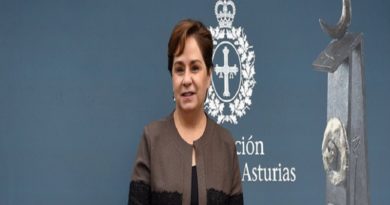Adaptation Fund board advances locally led adaptation, key partnerships
Meeting ahead of the UNFCCC COP29 climate conference, the Adaptation Fund (AF) Board at its 43rd meeting decided to advance enhancing access to adaptation finance for the most vulnerable by furthering new programmes that foster Locally Led Adaptation (LLA) on the ground.
It further strengthened climate finance access by reaccrediting multilateral implementing entity (MIE) partners UNDP and IDB, and approving several new country-level concrete adaptation projects.
In advancing implementation of a new LLA funding aggregator programme approved at its previous meeting, the Board invited several of the Fund’s implementing entity partners to develop programmes to administer these small AF grants directly to local entities that are not accredited with the Fund – from CSOs to indigenous peoples organizations, cities, local governments, community groups, entrepreneurs and others. Multilateral and regional implementing entities that are now invited by the Board to develop LLA aggregator programmes are the Caribbean Development Bank (at up to US$ 8 million), the Development Bank of Latin America (US$ 12 million), UNIDO (US$ 15 million) and UNDP (US$ 10 million).
These new LLA programmes resemble the Fund’s novel model set by its Adaptation Fund Climate Innovation Accelerator (AFCIA) programme, which is geared to channeling innovation adaptation finance directly to a wide range of local actors in vulnerable countries. The Board’s decision to develop the specific aggregator programmes focused on LLA followed a process of seeking expressions of interest for proposals from the Fund’s implementing entities, particularly those that are active in LLA-relevant sectors and groups that are underrepresented in potentially high-impact adaptation themes such as health, biodiversity, nature-based solutions, fragile and conflict-affected settings, and indigenous peoples, among others.
In other decisions, the Fund reached over 180 approved projects on the ground with the Board’s new funding approvals. Among new projects approved is the first Adaptation Fund project in Azerbaijan, which is host of the upcoming pivotal COP29 UN climate change conference next month. The US$ 10 million project will be a first of its kind climate change project for the country, which sits between Eastern Europe and Western Asia and faces a range of climate challenges — from extreme weather and heat to rising seas and water deficits. It will be implemented by UN Habitat and is aimed at building climate-resilient cities and communities.
As global climate impacts continue to increase, more vulnerable countries are starting to address their adaptation needs and access the Fund’s diverse resources. The Fund’s pipeline of projects under development that have not yet been funded is hovering around US$ 500 million a year. This mirrors the 2023 Adaptation Gap Report from UNEP that points to record temperatures, devastating storms, floods, droughts and heatwaves, and adaptation finance needs of developing countries being about 10-18 times larger than current international public finance flows — creating an adaptation finance gap of about US$ 194-366 billion a year.
In other actions the Board reaccredited the United Nations Development Programme for five years, renewing its important partnership with UNDP which has implemented some 30 projects for the Fund to date. The 5-year reaccreditation of the Inter-American Development Bank (IDB) also opens new opportunities for vulnerable countries In Latin America and the Caribbean to confront climate change through the Fund.
Additionally, the Board advanced concrete collaborations with the other multilateral climate funds (CIF, GCF and GEF) to enhance complementarity and coherence, welcoming several tangible joint efforts to date and advancing coordination to refine these actions and plans — which are aimed at streamlining processes and achieving greater collective impact to address climate change.
The Board advanced discussions on other critical issues, deciding to continue its reflections for potentially raising and setting the Fund’s country cap periodically as well as project and programme sizes, taking into account the cost of adaptation, inflation during the past decade, and other factors. It continued discussion on steps for a timely transition from serving the Kyoto Protocol and Paris Agreement to serving the latter exclusively and developing a strategy on monetizing a potential new carbon market mechanism contained in the Agreement that could generate 5% of proceeds from new emission reduction projects for the Fund. It also continued discussion on enhancing participation and engagement with civil society, among other decisions.
“It was an important meeting where the Adaptation Fund Board approved concrete actions to fund several new projects on the ground and advance several key partnerships among our implementing partners to enhance access to climate finance and further Locally Led Adaptation,” said Board Chair Lucas di Pietro. “The Board also engaged in several important discussions aimed at eventually advancing the Fund’s work to serve the Paris Agreement exclusively. It furthered discussion on the country cap, as well as advancing complementarity and coherence with the other multilateral climate funds — which is all targeted to enhance adaptation impacts in vulnerable countries.”
“It was great to see the Adaptation Fund enhance its tangible work on the ground for the most vulnerable countries, including advancing its actions in Locally Led Adaptation,” said Mikko Ollikainen, Head of the Adaptation Fund. “The Fund is the first climate fund to fully operationalize the global LLA principles, opening these direct local actions on the ground to a wide range of actors.”
Other moves included the Board deciding to revise its current system of country focal points – replacing single officer-represented Designated Authorities (DAs) — government officials in developing countries that serve as contact points for the Fund to endorse projects and new accreditations of national implementing entity (NIE) partners — with an entity-based system. This change is aimed at fostering continuity, teamwork and institutional knowledge that enhances access to Fund resources. Over the next year the aim is to invite eligible developing country governments to nominate a government entity to be the DA and include primary and secondary contacts.
Going forward, the Board also decided to approve bundling the Fund’s small innovation and learning grants together into single proposals from its national implementing entities (NIEs).
New projects and programmes approved by the Board included:
US$ 10 million for the MIE, UN Habitat, to build climate resilience in Azerbaijan;
a large innovation grant of US$ 5 million for the Palli Karma-Sahayak Foundation to help coastal climate-vulnerable populations of Bangladesh access safe drinking water through solar-generated reverse osmosis water treatment facilities;
US$ 3 million for the NIE, FNEC, to strengthen resilience and food security of vulnerable communities in Benin;
US$ 10 million for the regional implementing entity (RIE), ICIMOD, to foster sustainable actions to restore ecosystems in Pakistan;
US$ 4.7 million for the NIE, Profonanpe, to build an adaptation and resilience programme of local Andean communities and ecosystems in Peru;
a small innovation grant of US$ 244,000 for the Fund’s NIE in Senegal, CSE, to develop agro-sylvo-pastoral models for sustainable agriculture and environmental preservation;
US$ 286,000 in project formulation grants to help further develop an innovation project in Somalia and regional project proposals in Bolivia, Ecuador and Peru, and Argentina, Chile, Colombia and Peru;
and US$ 2.7 million for the MIE, UNEP, for coordination services for the AFCIA programme to enhance scale-up of phase 2 of AFCIA by coordinating implementing entities, monitoring and learning activities, creating innovation systems to support development, improvement and scale up of innovative adaptation practices, tools and technologies, and disseminating knowledge of successful adaptation innovations.




